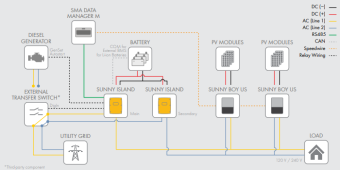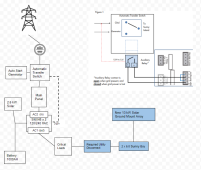OzSolar
Whatever you did, that's what you planned.
Another guy with a DC Power Solar Trailer thread, sorry.
I've spent hours searching this forum, the web, SMA's website and SMA's manuals and keeping striking out on find detailed instructions or even basic SLD's.
I've even did a "control f" in both the Sunny Island and the Sunny Boy manual for "AC Coupling". The only thing I found was in the SI manual said "The AC side connection between loads, generators and storage devices.". Perhaps I'm not using the correct search terms?
The main thing I've leaned is @Hedges and others are both very knowledge and patient. But where did they learn this? Anything I'm finding on SMA's website is 5 to 10 years old and not very helpful.
I did an off grid AC Coupled Sunny Island Sunny Boy system a long time ago so I feel like I get the general concept. It was simple compared this grid tied with a existing auto start generator/ automatic transfer switch set up that I'm trying to do now. Probably overthinking it as usual.
I already have a few SLD's put together but I don't want to waste any ones time before I ask where is the secret vault of AC Coupling knowledge kept?
Thank you
I've spent hours searching this forum, the web, SMA's website and SMA's manuals and keeping striking out on find detailed instructions or even basic SLD's.
I've even did a "control f" in both the Sunny Island and the Sunny Boy manual for "AC Coupling". The only thing I found was in the SI manual said "The AC side connection between loads, generators and storage devices.". Perhaps I'm not using the correct search terms?
The main thing I've leaned is @Hedges and others are both very knowledge and patient. But where did they learn this? Anything I'm finding on SMA's website is 5 to 10 years old and not very helpful.
I did an off grid AC Coupled Sunny Island Sunny Boy system a long time ago so I feel like I get the general concept. It was simple compared this grid tied with a existing auto start generator/ automatic transfer switch set up that I'm trying to do now. Probably overthinking it as usual.
I already have a few SLD's put together but I don't want to waste any ones time before I ask where is the secret vault of AC Coupling knowledge kept?
Thank you
Last edited:





